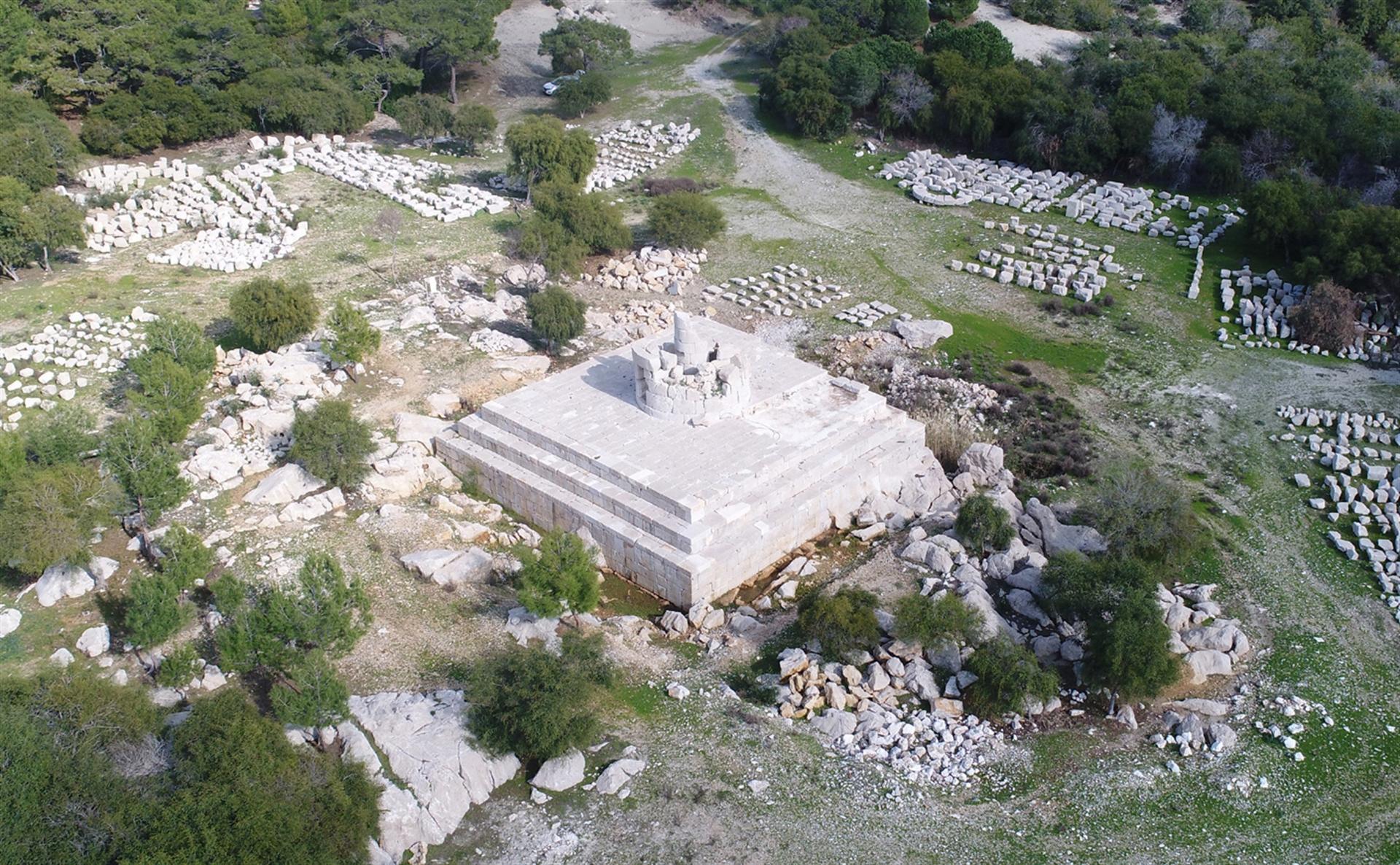
Located in the 6,000-year-old ancient city of Patara in the southern province of Antalya’s Kaş district, the Patara Lighthouse, which was built by Roman Emperor Nero and completely destroyed in a tsunami in 1481, is now being revived within the scope of a project for its reconstruction.
Some 2,500 stones that have been unearthed in the excavations were analyzed in the stone hospital, and their original locations were determined one by one using artificial intelligence technologies. The reconstruction of the 26.5-meter-high lighthouse, which is 2,000 years old, with possibly 80 percent of its original stones, is considered a first in the world.
Hundreds of historical artifacts have been unearthed in Patara so far during the excavations that were initiated by the Akdeniz University Professor Fahri Işık and his wife Havva İşkan Işık 32 years ago.
One of the most important of these artifacts is the lighthouse, built by the Roman Emperor Nero in 64 B.C. There are 2,500 original stones belonging to the lighthouse unearthed by Havva İşkan Işık, who became the head of the excavations in 2000.
The ancient city had been the capital of the Lycian Union for many years. The year 2020 was declared as the “Year of Patara” by the Culture and Tourism Ministry. In this context, the lighthouse, which is believed to have completely collapsed during the earthquake and tsunami in 1481, is being built on a completed six-meter podium.
A technical report was prepared by Cenk Üstündağ, an academic from the Istanbul Technical University, for the reconstruction of the lighthouse, which is thought to have been destroyed due to the Rhodes earthquake in the 15th century and a tsunami that occurred in the Mediterranean.
The lighthouse’s 2,500 stones, which have been found during the excavations, were x-rayed one by one in the stone hospital established in the area, and their original locations were determined with the help of a computer program and by using artificial intelligence technologies.
The scientific consultant of the reconstruction process and head of Van Yüzüncü Yıl University’s Architecture Department, Şahabettin Öztürk, who worked with İşkan’s architectural team, explained that approximately 2,500 stones unearthed during the excavations were analyzed and scanned with a laser. Öztürk pointed out that the stones remained under the sand after the collapse of the lighthouse, and that today it provides a great advantage for the reconstruction of the lighthouse.
Stating that the physical and chemical properties of each stone were analyzed in the laboratory, Öztürk said: “Some data about the general location of the lighthouse were also found on some coins from the Nero period, although they do not qualify as primary evidence. The stones in the stone hospital were individually x-rayed and analyzed to find whether there was any tissue loss in the interior. The bad ones should not be used, the solid ones should be used one-to-one.”
Explaining that the Revit program, which is the building system software, was used to determine the original locations of the stones, Öztürk said: “All data were processed in the program. With many trial and error methods, approximately 2,500 stones were found to be 80 to 90 percent compliant in the computer environment. In my opinion, 80 percent original stone and 20 percent new stone will be used in the reconstruction of the Patara Lighthouse. In this way, the lighthouse will be restored, and this is not a restoration but a reconstruction process, which means rebuilding the structure.”
On the lighthouse, which is said to be a prestigious project of the Roman Emperor Nero, there is an inscription in gold letters about its builder and the date of its construction.